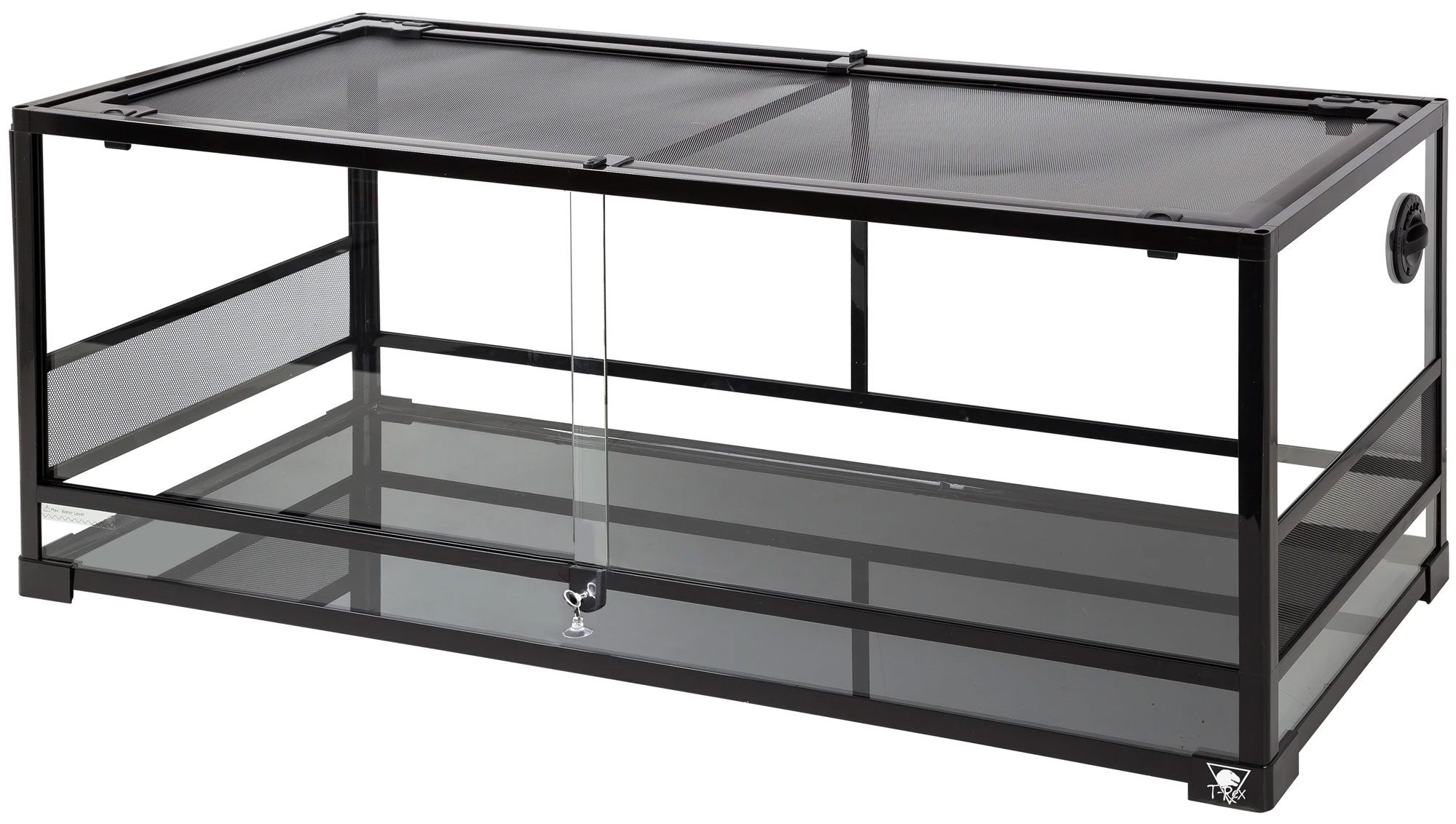Corn snakes make good pets according to experts for many reasons. First, they are tolerant of being handled and easy to care for, so they are a practical choice of beginning snake keepers. Some other traits that make these snakes popular are:
- Corn snakes do not usually grow larger than six-feet long, and are usually around three-feet long, on average.
- Corn snakes are found in hundreds of varied color morphs- they are beautiful reptiles to watch.
- Corn snakes typically live up to 15 years with proper care.
While corn snakes are generally easy pets to maintain, it is imperative that owners take care setting up the snake’s habitat and terrarium for them to thrive. If they are kept in the wrong habitat, they can get sick and even die. Stress, respiratory issues and dehydration are all signs that your pet is suffering and needs a change in their living environment. There are some basic decisions involved in making a habitat that a corn snake would thrive in.
Here are 7 things to know when setting up a habitat for corn snakes:
1. Enclosure
Do not underestimate the importance of the right enclosure for a corn snake. An ideal enclosure to use for a corn snake terrarium is a glass aquarium. Ideally, it should be around 40 gallons in size for this species. The best choices for a corn snake terrarium are either a glass aquarium or a plastic cage.
- Glass Terrariums are best for observing the snake, offering the most visibility, and are quite inexpensive to buy. These types of enclosures are easy to heat, though it may be difficult to control the humidity inside.
- Plastic Cages make sense because they are lightweight and durable. These types of enclosures are solid, not mesh, so it is easier to control the heat and humidity. These plastic enclosures provide less views of the snake but give the snake a bit more privacy.
Mesh and screen can harm the snake’s snout, so avoid these when choosing an enclosure.
2. Heat
- Corn snakes need a heat source to survive. An adequate corn snake habitat will require some type of heat source. Even warm homes in mild climates will require additional warmth for a reptile. Without a heat source, the snake may die. Talk to pet retailers about various heating elements that work well in a corn snake aquarium.
3. UVB
- Provide UVB lighting for corn snakes to strengthen their immune systems. These lights offer vitamin D, help with digestion, and act as a sleep cycle reminder.
4. Light
- It may be surprising that corn snakes do not require additional light sources in their habitat. Your current light fixtures or ambient light in the room where the enclosure is kept is adequate and fine for a corn snake. Beyond the UVB, which is an optional element of the habitat, corn snakes do not require any additional light sources to thrive.
5. Bedding
- The material that snakes use for their bedding is called “Substrate.” Some types of substrate include newspaper, mulch and specialty snake bedding materials.The best substrate choices for a corn snake cage are reptile bedding, cypress mulch, and aspen shavings. Never use cedar, pine or gravel, as these can harm or seriously injure the pet. When in doubt about substrate, it is worth giving some consideration to referring to a professional for advice.
6.Water
- Make sure that snakes have access to fresh water 24 hours a day. Use bowls of nonporous material that won’t tip over easily. Stabilize the snake’s water bowl to prevent spillage. Shallow bowls work well with corn snakes; clean daily as some reptiles may defecate in their water dishes from time to time.
7. Accessories
- Snakes are smart and can get bored like any other pet. Provide ample things for them to explore in terms of accessories, branches, stones and decorative items. Corn snakes also like to hide when stressed, so provide them with reptile accessories where they can seek shelter when needed. Hollow logs, and decorative pieces are furnishings that help make the habitat comfortable for the snake. These items should always be sanitized before you put them in the pet’s habitat.
Thinking about a pet? Consider a corn snake- they are easy to care for and delightful to watch. Use these tips to set up a terrarium that not only keeps a corn snake healthy, but also happy. Visit and consult with exotic pet care veterinarians and retailers to learn more.



